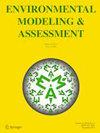插值,基于卫星的机器学习,还是气象模拟?城市中尺度气温时空制图的对比分析
IF 2.6
4区 环境科学与生态学
Q3 ENVIRONMENTAL SCIENCES
引用次数: 0
摘要
精细分辨率的城市近地表气温时空图为可持续城市决策、个人热暴露和气候相关流行病学研究提供了重要的数据输入。最近物联网气象站数据的可用性允许使用插值技术或机器学习(ML)等方法进行高分辨率的城市T图绘制。本研究旨在在实际和可操作的框架内执行这些方法和传统数值建模,并在数据可用性、计算约束或专业知识构成挑战的情况下评估其实用性和效率。本文利用Netatmo众包气象站数据和3种地理空间制图方法:(1)普通克里格(Kriging)、(2)统计ML模型(使用主要来自地球观测数据的预测因子)和(3)天气研究与预报模型(WRF)对波兰华沙6 - 9月近1公里空间分辨率的日气温进行了预测/制图,并与5个气象参考站的观测结果进行了比较。结果表明,ML可以作为传统克里格和数值模拟的可行替代方法,在城市气象研究领域具有降低复杂性和提高计算速度的特点(与地面气象站相比,总体RMSE = 1.06°C, r2 = 0.94)。研究结果对确定易受过热影响的城市区域和基于证据的城市管理应对气候变化具有重要意义。由于应用预测器的开源性质和输入的简约性,ML方法可以很容易地复制到其他欧盟城市。本文章由计算机程序翻译,如有差异,请以英文原文为准。
Interpolation, Satellite-Based Machine Learning, or Meteorological Simulation? A Comparison Analysis for Spatio-temporal Mapping of Mesoscale Urban Air Temperature
Abstract Fine-resolution spatio-temporal maps of near-surface urban air temperature ( T a ) provide crucial data inputs for sustainable urban decision-making, personal heat exposure, and climate-relevant epidemiological studies. The recent availability of IoT weather station data allows for high-resolution urban T a mapping using approaches such as interpolation techniques or machine learning (ML). This study is aimed at executing these approaches and traditional numerical modeling within a practical and operational framework and evaluate their practicality and efficiency in cases where data availability, computational constraints, or specialized expertise pose challenges. We employ Netatmo crowd-sourced weather station data and three geospatial mapping approaches: (1) Ordinary Kriging, (2) statistical ML model (using predictors primarily derived from Earth Observation Data), and (3) weather research and forecasting model (WRF) to predict/map daily T a at nearly 1-km spatial resolution in Warsaw (Poland) for June–September and compare the predictions against observations from 5 meteorological reference stations. The results reveal that ML can serve as a viable alternative approach to traditional kriging and numerical simulation, characterized by reduced complexity and higher computational speeds within the domain of urban meteorological studies (overall RMSE = 1.06 °C and R 2 = 0.94, compared to ground-based meteorological stations). The results have implications for identifying the urban regions vulnerable to overheating and evidence-based urban management in response to climate change. Due to the open-sourced nature of the applied predictors and input parsimony, the ML method can be easily replicated for other EU cities.
求助全文
通过发布文献求助,成功后即可免费获取论文全文。
去求助
来源期刊

Environmental Modeling & Assessment
环境科学-环境科学
CiteScore
4.50
自引率
4.20%
发文量
54
审稿时长
18-36 weeks
期刊介绍:
Environmental Modeling & Assessment strives to achieve this by publishing high quality, peer-reviewed papers that may be regarded as either instances of best practice, or as studies that advance the evolution and applicability of the theories and techniques of modeling and assessment. Consequently, Environmental Modeling & Assessment will publish high quality papers on all aspects of environmental problems that contain a significant quantitative modeling or analytic component, interpreted broadly. In particular, we are interested both in detailed scientific models of specific environmental problems and in large scale models of the global environment.
We invite models of environmental problems and phenomena that utilise, in an original way, the techniques of ordinary and partial differential equations, simulation, statistics and applied probability, control theory, operations research, mathematical economics, and game theory.
Emphasis will be placed on the novelty of the model, the environmental relevance of the problem, and the generic applicability of the techniques used. Generally, papers should be written in a manner that is accessible to a wide interdisciplinary audience.
 求助内容:
求助内容: 应助结果提醒方式:
应助结果提醒方式:


